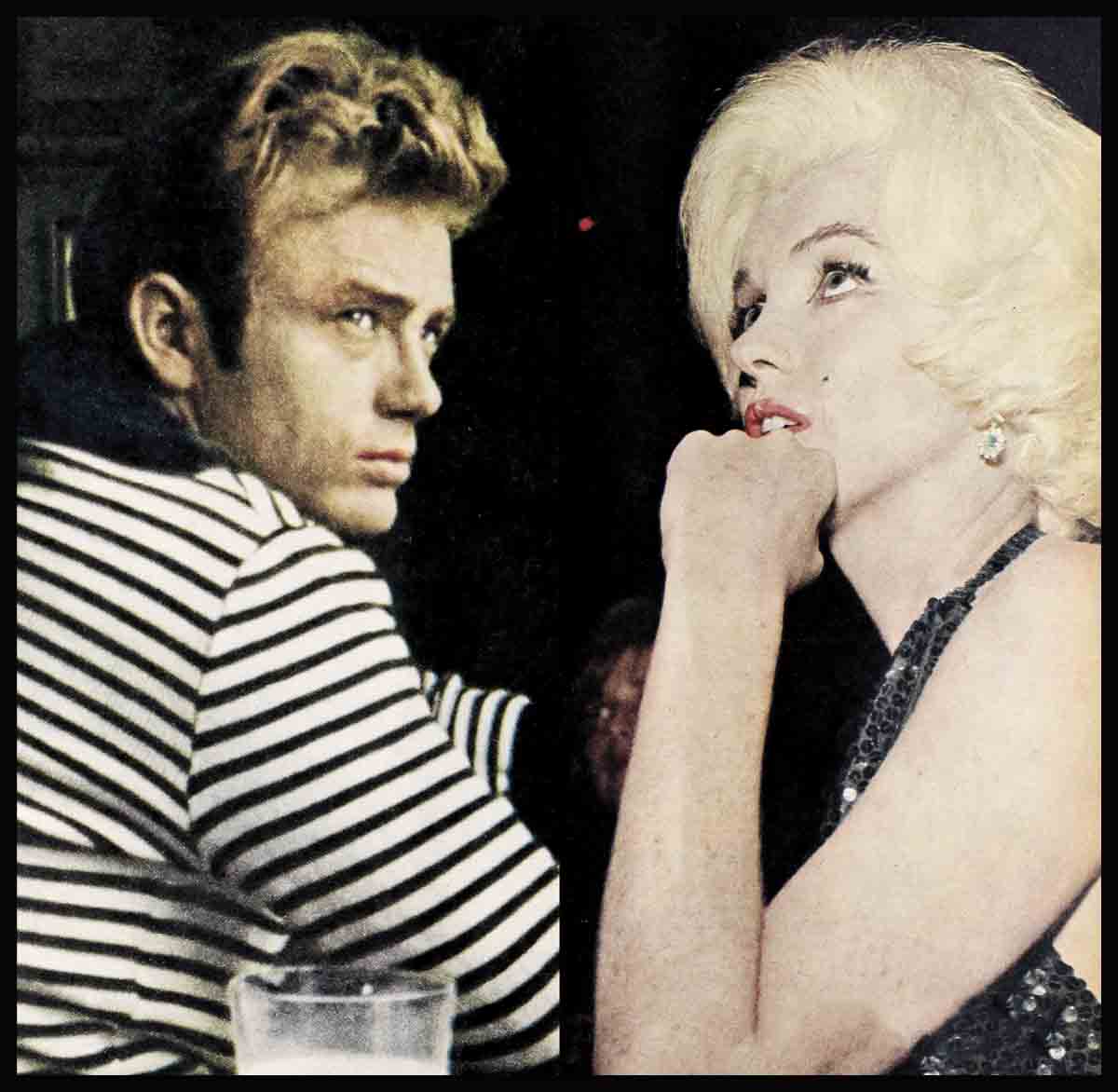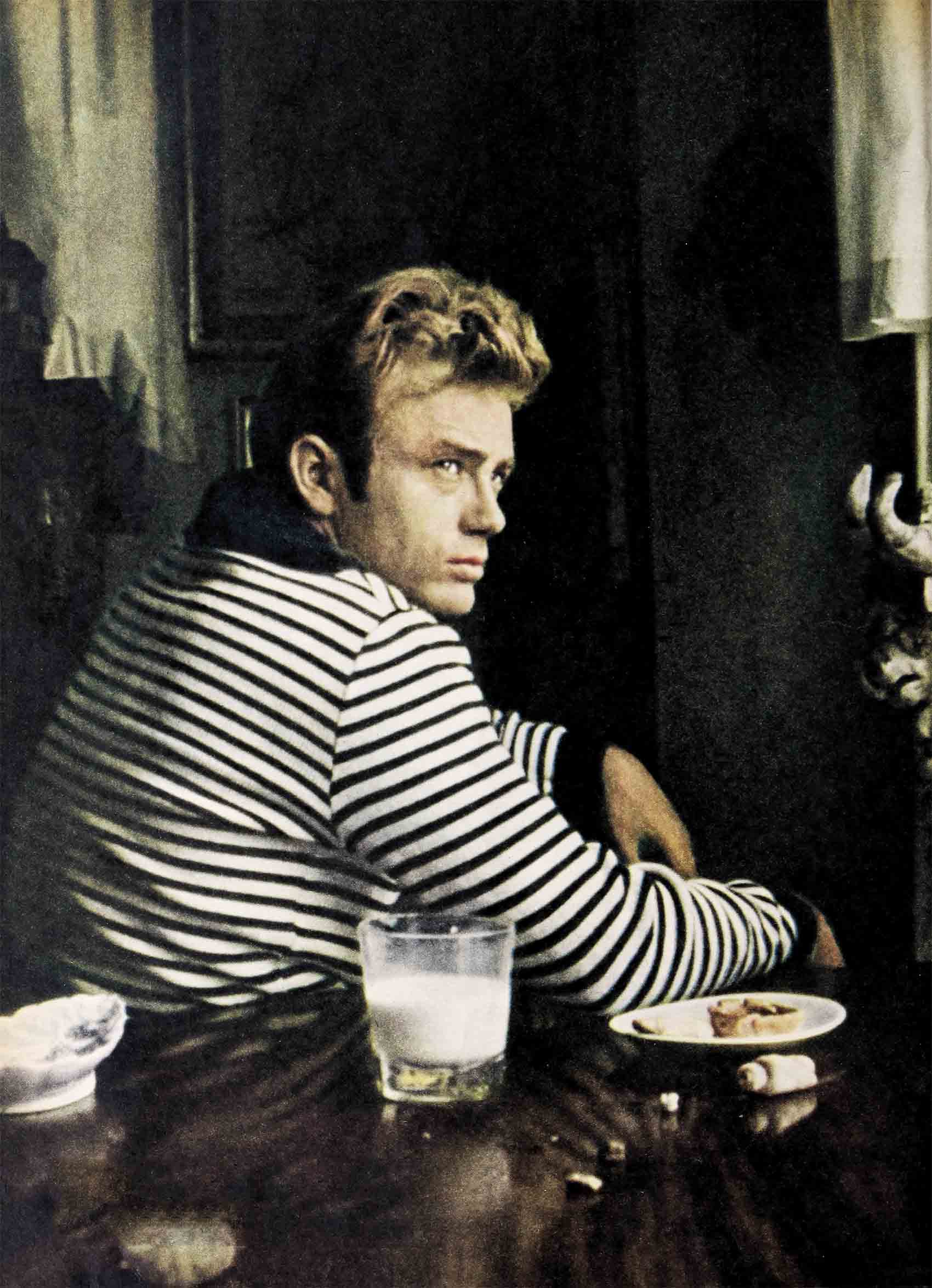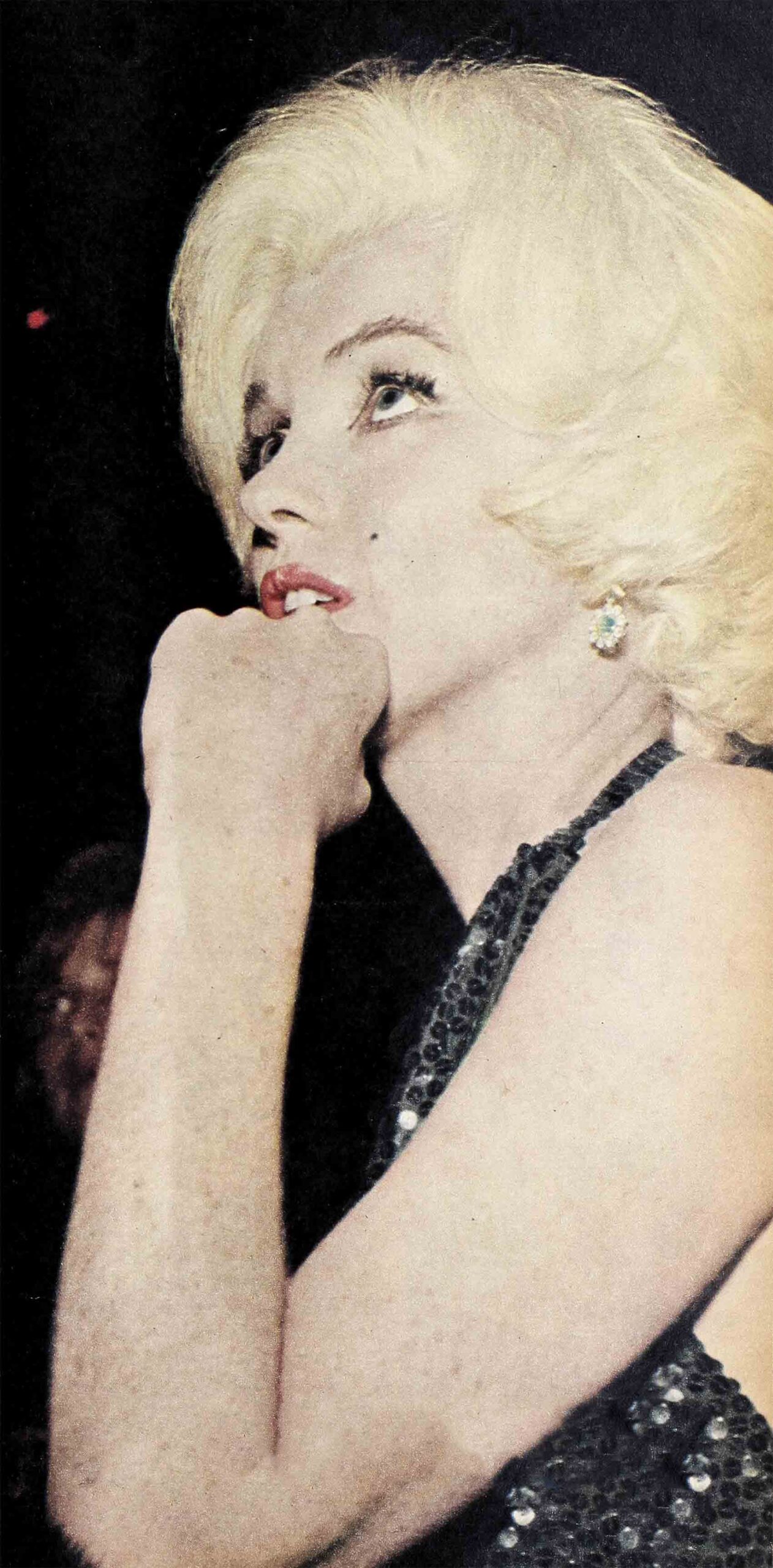
Life After Death—James Dean & Marilyn Monroe
He died in the twilight of summer when change unbalances the earth and tomorrow brings sheets of ice to a car’s windshield. He died in the death of peaches, plums, larkspur, shagbark hickory, sleeveless dresses, beach parties, sycamore trees and goldenrod. He was James Dean—and he died on September 30, 1955.
She died in the changeless eternity of August. Died in the stickiness of talcum powder and bruised ripe pears. Died adrift on an ocean of summer—when the preceding winter had been locked away forever five full months before. She was Marilyn Monroe—and she died on Sunday, August 5, 1962.
They died. The man in his anger; the woman in her grief. And were buried.
Death cannot he beautiful, but it can sometimes avoid being ugly; and James Dean lies where it must hurt a man the least. His body—so intense a symbol of 20th Century passions—lies in a cemetery, in Fairmont, Indiana, that is over a hundred years old. And there is consolation in the continuity of death. Two hundred years ago the quiet Indiana cemetery was a meadow. To the cows who graze among the graves, it is a meadow still.
A thousand cars an hour rush past Marilyn Monroe’s marble slab in Los Angeles. She is surrounded by department stores and new car agencies. Nursery school children playing on a jungle gym beyond the brick wall can see the already aging bronze plaque that marks the end of her existence. But Westwood Memorial Park is a pleasant place as cemeteries go. and the children should not be much frightened. A less real place than the place where James Dean is buried, its smallness makes the experience of death seem manageable; and it has none of the vulgarity or ostentation that label the large California cemeteries.
And so they are dead—immutably, incontestably dead. Yet. for eight years, James Dean’s death has been denied; and as Marilyn Monroe’s dying passes its first anniversary, her death, too, seems now to be becoming a myth of our time.

Our Greek gods
“This is the spontaneous creation of fairy tales,” says Dr. Martin Grotjahn, past President of the Society for Psycho-analytic Medicine of Southern California, author of Beyond Laughter, Clinical Professor of Psychiatry at the University of Southern California.
“We need a myth.” says Dr. Grotjahn. “Our movie stars are what the Greek gods were in antiquity. The Greeks were surrounded by gods, heroes, demons, nymphs, and satyrs. The medieval man was surrounded by God, the Holy Family, devils and witches. We no longer have saints. We live in an age of science and technique. It is no longer an age of poetry or religion, and we have lost our fairy tales.”
A myth. . . .
In death. James Dean received the love that had—before—eluded him. Death-collectors savored the details of his fatal automobile accident. They wrote letters to each other—and to him. In the past eight years, over 1,000,000 letters addressed to him have been stacked in the hallways of movie studios and magazine offices. Tearstained; the letters promised him love, marriage, and even promised the death of the letter writer to be traded for his death. Most of all the letters refused to believe in his death and begged him to prove what they knew to be the truth—that he was hiding because he had been hideously disfigured in the accident.
A fairy tale. . . .
It was hot the day they entombed Marilyn Monroe. Outside the cemetery walls, a thousand people waited docilely for Joe DiMaggio’s private, bitter grief to exhaust itself. “Let them in,” he said when she was safely walled away from them by marble. Warned that they would strip the toy- sized mausoleum of its hundreds of thousands of flowers, he shook his head. “Let them have their souvenirs.”
Between the death of James Dean in 1955 and the death of Marilyn Monroe in 1962 how many movie stars died and were forgotten? Tyrone Power. Gary Cooper. Clark Gable had been “The King” of Hollywood for twenty years, but no one fought the fact of his death. Ward Bond was star of one of television’s Top Ten programs when he died, but no myths grew up around his name. Humphrey Bogart. Ronald Colman. Errol Flynn. They were flattered. Adored. Subjects of dream fantasies. And now they are forgotten.
Death is, in the end, the winner of almost everything. Why does the sullen, loveless boy live on? And the girl-woman?
Dr. Lawrence Greenleigh, another practicing psychoanalyst and a former psychiatric consultant to the Peace Corps, says, “Clark Gable and Gary Cooper weren’t cheated. When they died, there was nothing missing. They appeared to get what they wanted out of life. Marilyn Monroe and Dean and—a generation before them—Rudolph Valentino, seemed cheated out of enough time. Their searching wasn’t ended. They died young and dissatisfied.”

Hints of answers
“We can never really find the answers,” says Dr. Grotjahn. “We can only find hints as to where the answers lie. Marilyn Monroe and James Dean teach us something we don’t want to know—that no one is too young to die. And it is possible our young people are more frightened of the sudden death of all of us than my generation was. So they try to prove that death can be overcome. They say, ‘He is not dead.’ And she—‘She lives eternally. She is only sleeping.’ ”
James Dean is caught forever on film as a half-wild animal—wounded, driven, relentlessly searching. Leather jacketed and speed crazy in real as well as reel life, he is the eternal adolescent. Mumbling, inarticulate, he talks with his sleek, mobile body. His rebellion against authority is all-encompassing. His anger is an endless roar. It is shocking to realize that at the time of his death James Dean was already almost twenty five years old.
If there are similarities between James Dean and Marilyn Monroe, there are also differences. She, too, was motherless from early childhood. She, too, was still adolescent, a girl-woman when she died at the age of thirty-six. She, too, seemed inexpressibly vulnerable as she begged for love.
But no one who knew her hated her.
Her anger was always quiet, turned inward against herself.
Dean was hated and his anger was directed towards the world until—in the end—it, too, turned on himself and he died in an accident that was as much a suicide as Marilyn Monroe’s gentle death.
It is Marilyn Monroe who interests Dr. Grotjahn the most. Whether her death by sleeping pills was deliberate or a miscalculated attempt to frighten someone, he sees in it and its aftermath the subtle interplay of love and hate, the relationship between love and death.
“The manner of her death did not violate her beauty. People who saw her afterwards say that she was never more beautiful. So she is not dead—only sleeping. And that is the symbolic meaning of the fairy tale, ‘The Sleeping Beauty.’
“The close relationship between love and death is beautifully symbolized by ‘The Sleeping Beauty’ where the princess is not to be given life by her mother—but by the first man who kisses her.
“Many people are longing for a hero and many others long to tear down a hero. The mental health of movie stars has to be precarious because they are so passionately loved and hated. The parking lot attendant arrogantly mistreats a movie star’s car just because it belongs to a movie star. The autograph seeker says insultingly, ‘My cleaning woman has a niece. Will you sign your name?’
“Now that Marilyn Monroe is dead, we can really love her. There is no need to envy her any longer. Think of the relief of every girl who wanted to be like her. She symbolized something very important for us—that any girl can become a movie star. Her suicide gave all the little girls reassurance that their uninteresting lives are better than hers was. Her death gave them proof that it isn’t worth it to be a movie star. Now they can really mourn her, partly out of guilt for their unconscious hatred.”
Dr. Greenleigh echoes Dr. Grotjahn’s thought. “What does it take to be happy? In a sense Marilyn Monroe by her suicide was telling them that success as an actress is not enough. And so she reassured them about their own unfulfilled lives.”
Dead and undead
Having died, she is still undead. Long buried, he is still alive. What can be said about the people who wrote 1,000,000 letters to dead James Dean?
“A posthumous fan club keeps alive a symbol that meant something to each individual involved,” says Dr. Greenleigh. “It may be a substitute for a loss of a real person in the fan’s life, a person who has died or gone away. Or it may even stand for the loss of the image of the beautiful, perfect mother who existed for the very young child. It’s also a vicarious dying and rebirth. The part of a person the hero represents has died, yet still lives.
“But a cult is something more. It’s a pride to people whose lives are empty. When something becomes a cult, it’s not a personal grieving any longer. We all need heroes for various parts of ourselves. The social isolation people now have makes them borrow heroes. They don’t know their neighbors and they can’t turn to each other so they turn to a Dean or a Monroe.”
But Dr. Greenleigh adds. “Whether it becomes a cult or not. what Marilyn Monroe stood for will be missed. She touched a wider range of people of all ages than Dean—people like Carl Sandburg who wanted to teach her.” (He is echoing Dr. Grotjahn’s sense that “Everyone needs heroes. We scientists need our heroes, too, so we write three-volume books about Sigmund Freud.”)
To Dr. Greenleigh, James Dean’s image on the screen was moving. “He was the man who was incapable of getting the love he desired and there is a little of that in lots of people. He appealed most to young people; he was misunderstood and they wanted to mother and give to him. As these people grow up and find satisfaction in their own lives, I think they’ll drop him. But I think Marilyn Monroe will stay an image. Her pictures are still pinned up in all the tailor shops. I don’t think it’s likely to stop suddenly.”
Yet Dr. Grotjahn is not so sure. “Our time is moving with such speed that she could be forgotten rather quickly.”
Time cuts myths to its own requirements. Fifteen years ago Marilyn Monroe did not—in a public sense—exist. James Dean has already lived after his death three times as long as his public life before death.
And perhaps their short public lives is why they live on.
More than almost any people, actors are seeking immortality. It will be ironic if, by their early embracing of death, Marilyn Monroe and James Dean are embedded forever in the mythology of our time.
THE END
—ALJEAN MELTSIR
It is a quote. PHOTOPLAY MAGAZINE SEPTEMBER 1963




